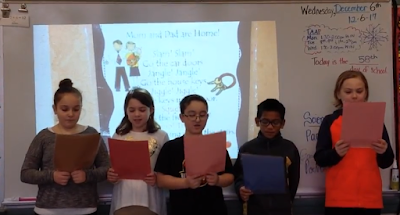Coding Success Feels Like This!
Recently Team Gibbas students got to try their hands at coding as part of the worldwide Hour of Code movement. Each year during Computer Science Week, December 4th - 10th, students get the opportunity to try the basics of coding in a fun one hour session. This year students got to try to write computer programs in the themes of Angry Bird, Star Wars, Minecraft, Moana, and Frozen. They could also create a Google logo, use Scratch to create their name, or try beginner's javascript.
Thank you, Mrs. Klipfel for bringing this fun and challenging learning opportunity to us!









































